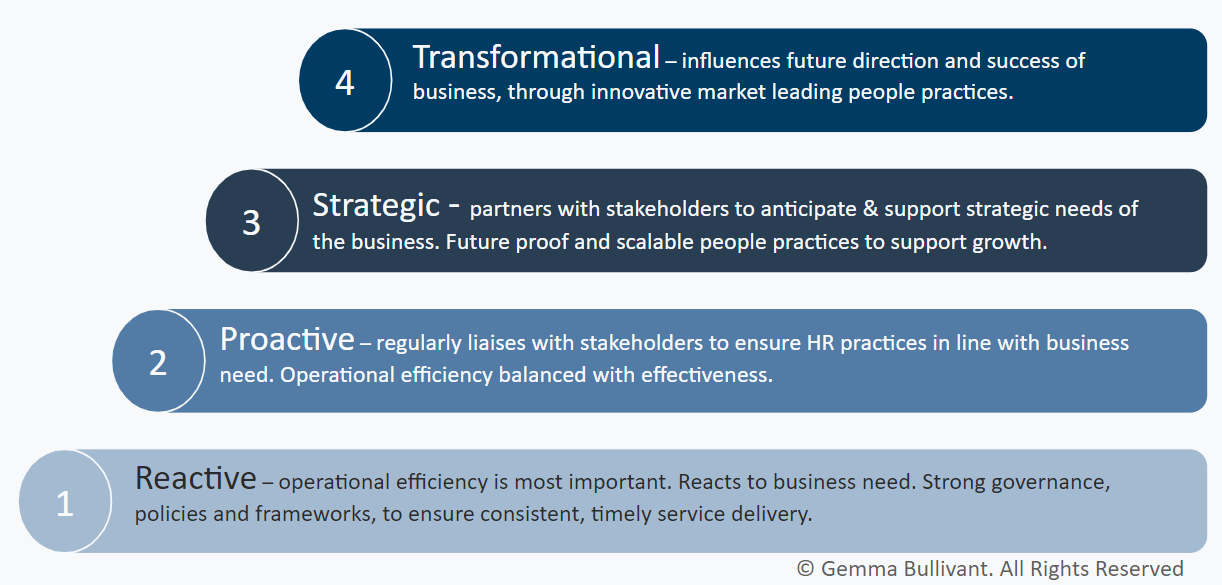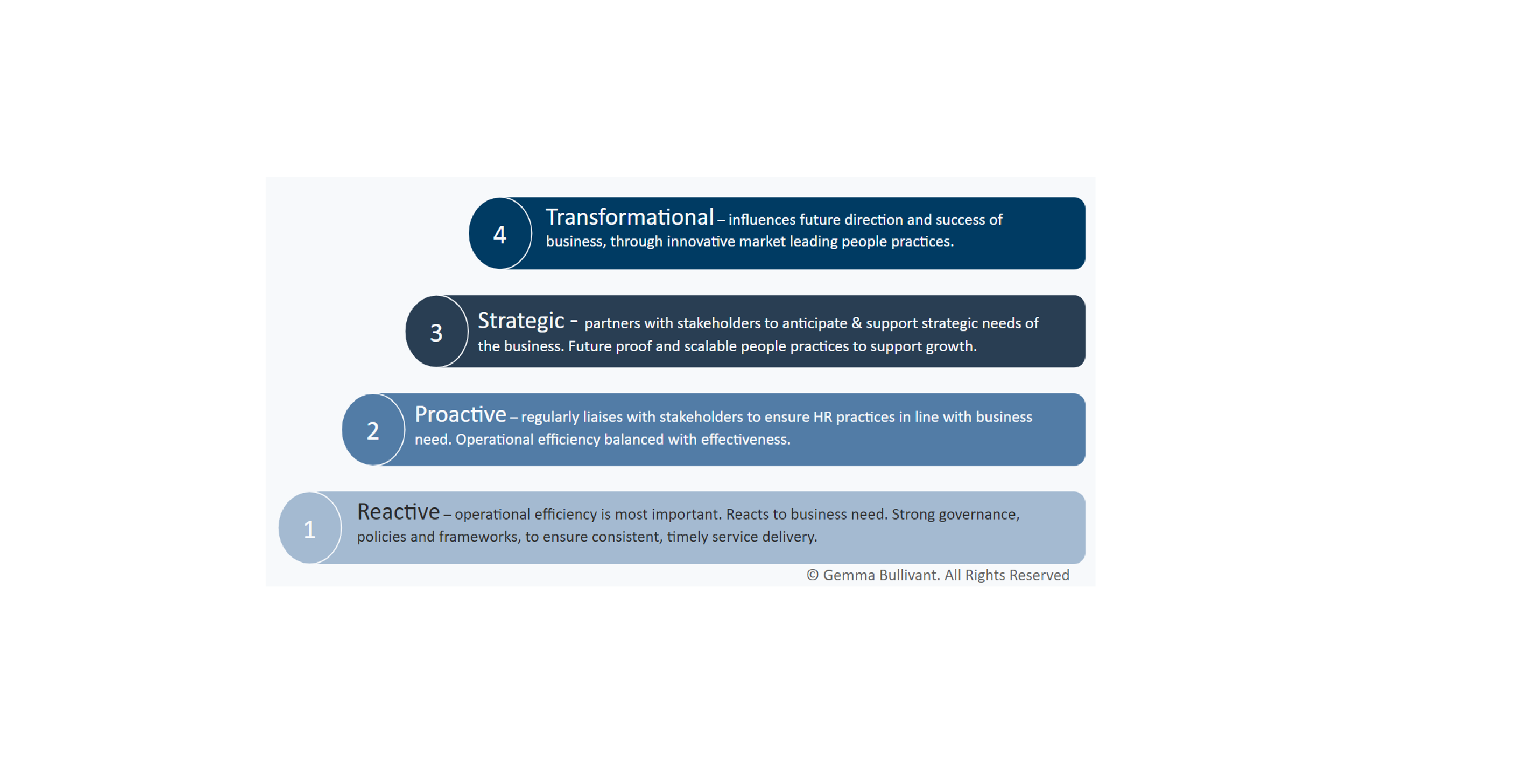Over the last few decades HR has gone through significant change. Once viewed as an administrative ‘personnel’ function focused on governance, efficiency and processes, the modern People function now typically fulfils a more strategic purpose to attract, motivate, grow and retain key talent, to enable optimum productivity through compelling employee experiences.
Efficient people processes remain essential, but are not enough to attract, engage and retain top talent, nor drive strong performance and productivity.
This article explores the differences between transactional and strategic HR, highlighting the importance of transitioning from transactional to transformational HR practices.
What is Transactional HR?
Transactional HR refers to the operational and administrative activities that are essential for maintaining HR processes within an organization. These tasks include payroll administration, benefits management, recruitment and onboarding, compliance with labor laws, record-keeping, and employee data management. While crucial, transactional HR alone cannot maximize the potential of HR functions to drive organizational growth and employee engagement.
Transactional HR responsibilities encompass a range of essential tasks that keep HR operations running smoothly. These may include:
– Managing employee records and data accurately and securely
– Ensuring compliance with employment laws and regulations
– Administering payroll and benefits programs efficiently
– Conducting routine HR processes, such as recruitment, onboarding, and offboarding
– Handling employee inquiries, grievances, and performance management
– Maintaining HR policies and procedures
Moving from Transactional to Transformational HR:
This is a maturity model I have created to describe what we might expect to see or want from a People function. Each step forms a building block to the next – in other words, a more strategic level 3 or 4 People function cannot exist without strong transactional processes and expertise in place at levels 1 and 2.

So before we can adopt a more strategic, transformational approach, the transactional/operational needs of the business need to be fulfilled. This can be achieved in a range of ways, including clear processes and systems, automated workflows, employee self-service, and effective HRIS.
How to take a more strategic approach
Once the transactional needs of the business are taken care of, the HR team can make the shift to a more strategic approach. Examples of this strategic shift might include:
-
Developing a Strategic Mindset:
– Understand the business objectives and align HR strategies accordingly.
– Become proactive in identifying talent gaps, succession planning, and workforce development needs.
– Partner with key stakeholders to contribute to strategic decision-making.
-
Embracing Change and Innovation:
– Anticipate industry trends and identify opportunities for HR to drive innovation.
– Implement technology solutions to streamline HR processes, enhance data analytics, and improve decision-making.
– Embrace agility and adaptability to effectively respond to changing business needs.
-
Building a Culture of Engagement and Performance:
– Foster a culture that promotes employee engagement, diversity, and inclusion.
– Develop performance management processes that align individual goals with organizational objectives.
– Encourage continuous learning and professional development to support employee growth.
-
Strategic Workforce Planning:
– Analyze workforce data to identify skills gaps and talent needs.
– Develop comprehensive workforce plans that align with the organization’s long-term goals.
– Implement effective recruitment and retention strategies to attract and retain top talent.
While transactional HR functions are vital for the smooth operation of HR departments, organizations must strive to transition to a strategic and transformational HR approach. By adopting a strategic mindset, embracing change, fostering an engaged culture, and implementing workforce planning, HR professionals can become strategic partners in driving organizational success. This transition enables HR to contribute more effectively to talent attraction and retention, employee engagement, and overall business growth. By evolving from transactional HR to a transformational role, HR professionals can position themselves as valuable strategic advisors and catalysts for positive organizational change.
Here are four practical examples comparing a transactional HR approach to a more strategic or transformational HR approach in addressing 3 of the most common HR challenges:
-
Recruitment of Talent:
– Transactional HR: Posting job advertisements, screening resumes, and conducting interviews based on predefined criteria.
– Strategic/Transformational HR: Conducting a comprehensive workforce analysis to identify current and future talent needs. Developing a robust employer branding strategy to attract top talent. Implementing innovative recruitment techniques, such as leveraging social media platforms, attending industry events, and creating partnerships with educational institutions to build a pipeline of skilled candidates.
Benefits of a Strategic Approach: Taking a more strategic approach to recruitment allows HR to proactively address talent gaps, attract high-performing individuals, and create a diverse and inclusive workforce. It enhances the employer brand, leading to increased candidate interest and higher-quality hires.
-
Lowering Attrition:
– Transactional HR: Reactively addressing turnover by conducting exit interviews and tracking reasons for employee departures.
– Strategic/Transformational HR: Conducting regular employee satisfaction surveys to identify drivers of engagement and retention. Developing targeted retention programs, including career development opportunities, mentorship programs, and work-life balance initiatives. Implementing effective performance management systems that provide continuous feedback and opportunities for growth.
Benefits of a more Strategic Approach: Taking a more strategic approach to lowering attrition fosters a positive work environment, improves employee satisfaction and engagement, and reduces turnover costs. It helps identify underlying issues and proactively addresses them, leading to higher employee retention rates.
-
Performance Management of Poor Performers:
– Transactional HR: Following a standardized performance management process, including annual performance reviews and disciplinary actions.
– Strategic/Transformational HR: Shifting the focus from punitive measures to a coaching and development approach. Providing ongoing feedback and support to employees, identifying areas for improvement, and creating personalized development plans. Offering training and resources to enhance skills and competencies.
Benefits of a Strategic Approach: Taking a more strategic approach to performance management focuses on improving employee performance and addressing root causes of underperformance. It promotes a culture of continuous learning and growth, resulting in increased productivity and job satisfaction.
-
Managing Pay & Reward:
– Transactional HR: Administering compensation and benefits based on predefined salary structures and standard practices.
– Strategic/Transformational HR: Conducting market research and analysis to ensure competitive compensation packages. Developing a total rewards strategy that encompasses monetary and non-monetary benefits, including recognition programs, flexible work arrangements, and career advancement opportunities.
Benefits of a Strategic Approach: Taking a more strategic approach to pay and reward helps attract and retain top talent, enhances employee motivation and engagement, and supports a positive employer brand. It ensures that compensation practices align with organizational goals and the external market, creating a fair and competitive reward system.
By adopting a strategic or transformational HR approach, organizations can optimize their HR practices to address specific challenges more effectively. This results in improved talent acquisition and retention, enhanced employee engagement and performance, and ultimately contributes to the overall success of the organization.



